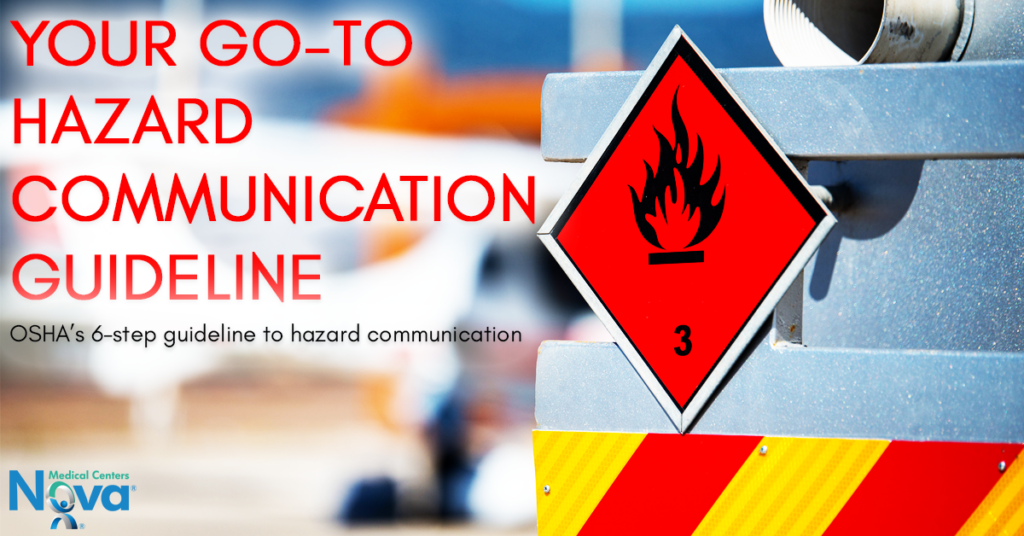
OSHA’s 6-step guideline to hazard communication
Any business where employees work with chemicals must have a hazard communication program in place and be in compliance with OSHA’s Hazard Communication Standard (HCS). A hazard communication program is designed to provide people with the chemicals they are exposed to in the workplace. This is done through proper labeling, employee training, etc. It is the responsibility of the employers to prepare and implement a written hazard communication program to ensure the safety and well-being of employees from a chemical source illness. Here OSHA has created a 6-step guideline that employers can utilize to create a hazard communication program:
- Learn about the standard and identify responsible staff
Make sure that you familiarize yourself with OSHA’S Hazard Communication Standard. You can obtain a copy of the HCS at https://www.osha.gov/dsg/hazcom/. Assign someone within your organization the responsibility of implementing OSHA’s guidelines and training.
- Prepare and implement a written hazard communication program
Write a hazard communication program specific to your organization. The program that is written should include labels and other forms of warning, safety data sheets, and employee information and training. The program should also include a list of all hazardous chemicals in the workplace.
- Make sure your chemical containers labeled
Chemical manufacturers and importers are required by law to provide labels on shipped containers. As an employer, you can choose to either use chemical manufacturer labels or alternative labels through a third-party system. All labels at a minimum must include the product identifier and general information about the hazards of the chemicals.
- Maintain safety data sheets (SDS)
Safety data sheets are detailed information sheets on particular hazardous chemicals. Each hazardous chemical that is in the workplace must have copies of SDS. All SDSs need to be accessed readily and easily accessible to your employees.
- Inform and train employees
Before employees start their work assignments, they need to be properly trained in working with hazardous chemicals. Employees must fully understand what chemicals they are being exposed to, what safety data sheets they can gain information from, and what protective measures are available to them in their workplace.
- Evaluate and reassess your program accordingly
Periodically review your hazard communication program. Make sure it’s relevant and still effective for your organization’s needs. Appropriately make revisions to your program to address any changed conditions in your workplace.
By implementing a hazard communication program for your organization, not only are you compliant with OSHA but you are supplying your employees with information and steps that can help them better protect themselves. You may also like: Occupational Medicine Clinics: A Worth-While Investment For Your Company and Keep Your Workers Protected During Demolition.
At Nova Medical Centers we specialize in Occupational Health. From our outstanding services to our convenient electronic systems, we provide the best care for employees who need our help. We pride ourselves on helping others. If you happen to get injured on the job or contract any illnesses, just stop by one of our clinics. Feel free to contact Nova Medical Centers with any questions or comments that you may have.



